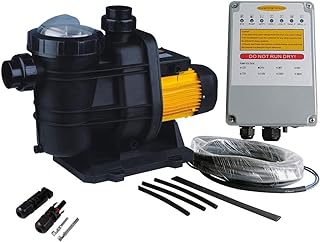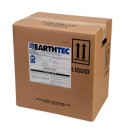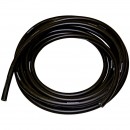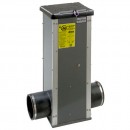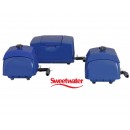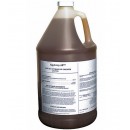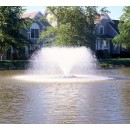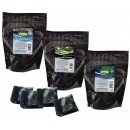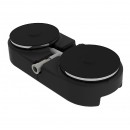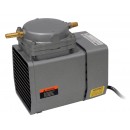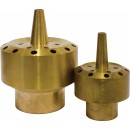Your pond pump is one of the most important aspects of your pond
Your pond is alive with fish and pants and algae and insects and all of them are trying to find a balance. Think of your pond as a human body with blood and bones and skin and hair and you see how we can draw parallels between a pond and a living person.
What is the one thing that every one of us needs to keep healthy in order to guarantee our survival?
The Heart! Yes the heart pumps our oxygenated blood through our veins and into our brains and lungs and keeps our vital organs strong and alive...it is much the same for a pond and the pump is like our heart; you need a reliable pond pump to ensure that everything is moving and the nutrients, lungs and organics in your pond are all well kept!
Just like our own nutrition is important so is the nutrition of a pond and again, the pump plays a primary role in ensuring that the water doesn't stagnate and keeps moving through the thermocline and into the upper levels of the pond and to the surface where the oxygen transfer can occur.
Yes...the pond pump is one of the pieces of the puzzle that should be researched before buying. Check the favorable reviews for your pump before you buy it...there are many variations available from amazon.com and ebay.com but not all motors are created equal.
Many of my clients ask me how to build a pond pump or how to build a pond aerator and the answer is always pretty much the same: you can't really!
Well of course if you are like the Professor from Gilligan's Island you might be able to build a pond aerator system out of palm tree leaves and coconut husks wrapped around old stainless steel dishwasher muffler parts but not everyone has been to NASA science school...some of us...myself included couldn't build a homemade windmill aerator if my life depended on it!
You may have electricity near the pond are considering a 110 volt or 120 volt submersible or shore mounted linear pump. These work very well even for driving a waterfall. Some of my clients consider solar pumps, solar aerators or solar powered lawn mowers!
OK...I may be exaggerating with the solar powered lawn tractor as usually it is too expensive to make a fountain or pump work with cheap do it yourself solar power systems.
"Listen up" my wife said! Instead of trying to build a cheap aerator or fashion a homemade pump system from the old tennis rackets and fireplace bellows you have in the garage just make the leap and buy a good quality pump for a few hundred dollars.
I know it isn't in some of your genetic code to spend more that $19.99 on a pump but if you value the investment you have put into building a pond and stocking it with fish then you should perhaps use professional equipment to aerate and make your waterfall instead of trying the DIY route!
I'm not against trying to whittle a beer-opener out of a tree branch, heck, I've done that many a time but when it comes to my pond I want to just buy a cheap pump that lasts for years and has good reviews and then I'm all set!
My time is becoming more valuable as I get older and I don't want to spend 12 hours in the garage building my own aeration pump if I can order one for a few hundred bucks!
Submersible Pond Pumps
See Our Choices For Pumps on Amazon
As an Amazon affiliate we may recieve payment for purchases made through Amazon. |
|
|
|
|
|
|
|
|
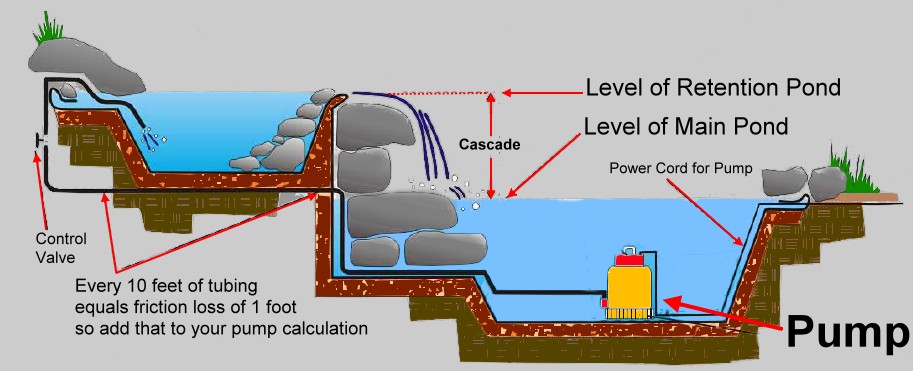
Stage 1 - Placement of pump Secure flexible tubing to the outlet of pump using a stainless steel hose clamp. Submerse at the furthest point from the waterfall. Route the tubing over side of pond (can be hidden under perimeter stones). Make sure the stone does not pinch the tubing, and avoid sharp bends in the tubing so it does not kink and reduce flow.
Stage 2 - Tubing Route the tubing to the waterfall. Bury under soil.
Stage 3 - Building waterfall pond Use displaced soil from pond to build an elevated area for waterfall. Consider making a small auxiliary pond in this mound. Position the spillway to flow into main pond. Build the small pond using the same techniques and liner as the main pond. Two layers of liner are recommended for this pond. The first one contains the water. The second liner channels the water towards the fall. Important! Be sure the liner drapes underneath the waterfall spillway stones - otherwise you will experience water loss when the waterfall is in operation. You may need to use liner seam tape in this stage.
Stage 4 - Building spillway Once the spillway liner is in place - you will want to pump water up to the auxiliary pond and watch it flow down the liner spillway. (At this stage - your pond should be full of water). Carefully select stones and position them - while the water is flowing over them. With the water flowing over the rock, you may replace, shift and add stones so you achieve the desired water spills you desire. Place plant moss and small plants between the stones around the waterfall to achieve a natural look.
For waterfalls it is recommended to have between 50 Gallons per Hour and 150 Gallons Per Hour for every inch of width of your waterfall. i.e.: If you want an 18" wide waterfall you should have a pump giving between 900 and 2700 Gallons per Hour. To determine the size pump you need for your pond, take the total volume of water of your pond (in gallons) and select a submersible pump that will pump at least that much water per hour. So, if you have a 1000 gallon pond, you will need a pump with a flow rate of at least 1000 gallons per hour. It is better to use a larger pump that required and add a flow restricter valve, this allows you to adjust the flow as required. If you have any questions please email us
Your Pump Is The Heart of Your Pond
As I sit around the backyard with my family and friends watching the fireflies dip and dance in the reflections and ripples of my pond I often breathe a deep sigh as I sip my cranberry juice and say a silent thank-you for giving me the chance to enjoy the moment. I'm sure many of you pond owners know the times you spend in the tranquility of the backyard pond is priceless! Of course I also enjoy fishing for bass on the large earth pond I have on another property a few miles away; nothing like pitching the tent by your a 2 acre pond surrounded by birch and pine trees at sunset as the fish hop and jump for their insect supper or the occasional fish hook of Uncle Bob, the champion fisherman of our family!
But since I live in the city with a fairly small 15,250 square foot property I have spent much of my time at home concentrating on my backyard water garden, or the "money pit" as my wife likes to call it! When I first broke the soil with the shovel, first started digging the pond, I was a bit of a beginner and wasn't really prepared for what was in store for me. We'd lived in homes that had outdoor pools, both inground and above ground pools, and we had said to each other that these pools were too much work and maintenance with the additional of chlorine and pucks and scrubbing the algae off the cement walls of the pool we had realized that a swimming pool was 80% work and 20% enjoyment...well...since it was me who did all the work I'd say that my wife got 100% enjoyment and I did all the work...but that's another story!!
Before I get to the pump reviews where I review pond pumps let's start with the basics that most of my clients ask me when I visit there property as a pond consultant and they ask me what to do to build a healthy and self-sufficient pond. Digging the pond and laying the EPDM liner is easy; I mean I do break a sweat when I do it but it is not a special skill to build a pond...the key is to make sure all elements are in place to allow the small water garden to not be green and stinky...that just takes some basic knowledge of what sort of pond chemicals or additives like beneficial bacteria need to be added.
We have often heard people pontificating about the importance of aeration and everyone inevitably asks me why do I need to aerate my pond and the reason is simple...in fact it comes straight from the heart!
See Our Choices For Pumps on Amazon
As an Amazon affiliate we may recieve payment for purchases made through Amazon. |
|
|
|
|
|
|
|
|
Why should I have a pump?
You do not absolutely have to have a pump for a pond you may want it to look "natural" without any ripples or movement but sometimes stagnant or still waters can be breeding grounds for mosquitoes and algae and green water can become a problem...not all the time but often a pond without a good circulation/aeration system will develop problems so if you do want a pump there are many benefits as we've discussed in our aeration pages. As we've said the pump is the "heart" of any pond and is good at supplying a small fountain, a waterfall or even pumping through your skimmer and biological filter.
The size of the pump you choose depends on what you want it to do. If it is just for a fountain then most pumps come with suitable attachments. If it is to run a filter and fountain then it needs to be slightly bigger. There are multipurpose systems that have multiple outlets that allow tubing to run to your spitter or waterfall as well as add-on fountain nozzles that can be changed to create cheap fountains anywhere from 12 inches to 6 feet of spray above the pond!
The quantity of water in the pond dictates this. If you have a "average pond" then the water should be turned over every 3-4 hours, but it should be every 1-2 hours for a koi pond. Your choice of pump should be one that is big enough to turn the water over often enough and run a fountain (if required) It is better to have a bigger than required pump as you can reduce the flow easier than trying to increase the flow of an undersized pump!
Now...choose the best pump for your surroundings
There are two types of waterfall pumps we use. The External Pump and the Submersible Pump. The external pump sits outside of the pond much like a swimming pool pump would. It has an intake hose in the pond, preferably at the deepest point of the main pond and far from the waterfall to provide the best circulation efficiency for the system. The Submersible pump is actually in the water and sucks water directly through the pump into the outlet hose to the waterfall or retention basin. Both work, but all pumps are not equal.
So what is the best pump available? The choice of pump is up to you, but you should take a few things into consideration once you have made up your mind on using a submersible sump pump type of pond pump or fountain pump or the ground mounted external system.
If you want a fountain and filter will the pump be strong enough to run both? I often suggest that you have two separate pumps but the 110V submersible pumps are often the best choice for the average small pond or water garden. Do not forget at night the general ambient noise level is quieter than during the day so what may be a pleasant "lapping" or "tinkling" sound when the fountain is splashing during the day can become an extreme "crashing" or "gushing" noise at night which may upset you and your your neighbors more than the teenager with the new car down the street with his new sound system in his totally tuned Honda! If you have two pumps you can turn the fountain pump off when it gets late, or better still fit a timer on to your pond system and have the noisy pond bits running only when it is appropriate!.
Another thing to be considered is how much will it cost to run? The cheap pump from the hardware store or the one you bought on Ebay may be cheaper to purchase but what about its running costs and the warranty? A "sump" pump is fine and you can buy one from the local hardware store for less than $100 but those sorts of pumps are mainly for sucking the flood waters from your basement and not designed for continuous duty in a pond! A system that must run 7 days a week and 24 hours per day must be reliable and when it is running most of the summer, with the cost of electricity, you need to avoid the cheap "power hungry" models and get something that is efficient...the initial cost may be high but just because you get a deal from Jimmy in South Dakota selling his aquarium filtering pump on Ebay doesn't mean it's the right thing to do!
External Pond Pumps
See Our Choices For Pumps on Amazon
As an Amazon affiliate we may recieve payment for purchases made through Amazon. |
|
|
|
|
|
|
|
|
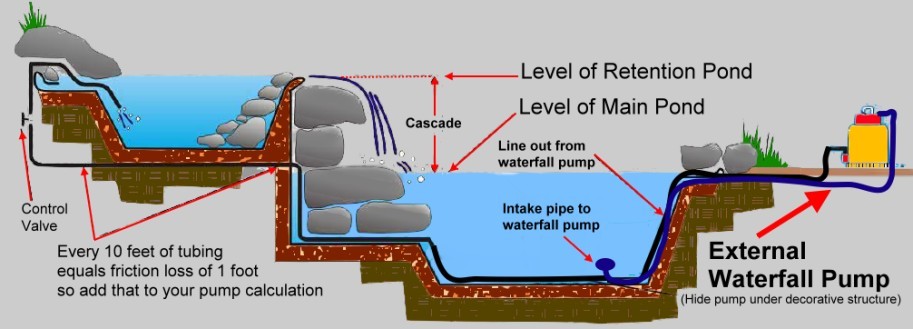
External pond pumps are usually mounted on the shore and are great because they are easier to service because you don't need to go up to your elbows in stinky, smelly pond water to retrieve them!
Place the pump in some sort of insulated cabinet, shed or pool house to make sure the system is not exposed to rain, snow or other such hazards like the gnashing teeth of muskrats, beavers and squirrels! The diagram below shows one popular way how to install your pond pump. The units we use are all 220V so if you only have 110/115V then check out the pumps with fountain heads included below this section.
The Pond Report has tested dozens of external pond pumps including the Dynamo Pumps, WunderFlo Pumps, Aqua Flow, Artesian Pumps, Cascade Pumps, Swing Check Valve Sequence Pumps, Little Giant etc. etc until we were sick of trying every little cheap pump that said "Made in China" on the sticker!!. Of course we all prefer something that is "Made in USA" or we have found Japan, Taiwan, and Germany also make very good aquatic systems!
Our overall best-performing winner of all reviews of external pond pumps is the SF-SeaFlo series of pumps. They are a high performance pump that require a 208/230V electrical service. Designed for larger ponds and systems that require an extra and powerful flow these are self-priming with a high efficiency impeller and life extending diffuser wear ring. They all have a fiberglass reinforced. 2” suction and discharge ports. Single piece corrosion resistant over sized strainer pot and volute.
Unique diffuser and impeller provide excellent pressure performance across wide range of desired gallon per minute flow rates. User friendly drain plugs. All stainless steel hardware. These pumps are our favorites as they offer an unprecedented 3 year limited warranty.
The Pond Report has given Pentair Sea Flow High Performance Self-Priming Pumps feature sophisticated design translated into unprecedented power that offers the ultimate in efficiency our highest PK 7 rating as they are simply the best pumps money can buy. . These unique external pond pumps are designed to handle the larger capacity jobs of ponds or larger aquariums to deliver excellent flow with less friction and less noise while using smaller horse power motors.
For best pump performance, install this pump out of direct sunlight within 3' of the water surface level.
Perfect for use in pool, water garden, and koi pond applications, these aboveground pumps keep maintenance convenient. The large strainer basket and see-through lid permits fewer services and easy inspection. Their unique diffuser and impeller provide excellent pressure performance at a wide range of gallon-per-hour flow rates. Easy to remove drain plugs on the strainer basket and pump chamber make end of season maintenance a breeze.
Solar Pumps
If there is no electricity supply available you can use a solar pump. They mostly come in two varieties. The floating "island" type and the "separate submersible" type that has a solar panel or a few solar panels to operate the pump. While these pumps may be efficient if they have a night and day back-up battery system they are not very effective if they are run "solar direct" or just when the sun is shining. I've also seen many solar pond pumps become practically useless as soon as a bird poop lands on the solar panel! You'd be surprised how much a solar power system can degrade in efficiency as soon as shadows or debris cover one of the cells of the panel. Again...don't buy cheap solar panels!
Floating Island solar fountains are so called because they float on the pool with their solar cells built in pointing upward, looking like an island. As they are usually small they need a great deal of sunshine to work and where does the water go? over the solar cells eventually leaving mineral deposits on the cells obscuring them from much needed light, so they need cleaning regularly. Also the water cools the solar cell down making them even less efficient.
Separate Submersible solar fountains are just that, they have a separate solar cell or cells which can be positioned away from the pond pointing towards the sun and the pump is sitting in the pond. As most* separate solar fountains have big solar cells they can run much more powerful pumps giving a better display, we have even seen some which have a "battery pack" to run the pump at night. Also because they have bigger solar cells they need much less light to start working and as the solar cells are not under water they need cleaning less often.
As with most things in this industry you get what you pay for, Island solar fountains are fairly inexpensive and if they get damaged you throw them away but separates you can replace the broken part.
More Pond Pump Websites
Here are some websites we recommend if you are looking to buy something in Canada, The USA, Europe or anywhere in the world!
PondsOnlineCanada.com: http://pondsonlinecanada.com/pumps.htm
. Pond & Waterfall Pumps 200 to 6,500 Gallons Per Hour . .up to. . Pond, Filter & Waterfall Pumps 80 to 6,000 Gallons Per Hour .up to. . Marathon Water Feature Pumps 350 to 800 Gallons Per Hour .up to. . FP Filter Pumps 1,000 to 2,000 Gallons Per Hour . Geyserflow Stainless Steel Pumps 2,320 to 6,290 Gallons Per Hour . ECO Pond, Filter & Waterfall Pumps 950 to 10,000 Gallons Per Hour . Pond Pumps 1,200 to 2,420 Gallons Per Hour . 50 ft. power cord available Split Tube Technology Waterfall Pumps 1,980 to 8,720 Gallons Per Hour . Triangle & BVP Solids-Handling Pumps 1,380 to 5,280 Gallons Per Hour Lifegard QUIET ONE Pond Pump Kits 220 to 1,500 Gallons Per Hour . Water Master Solids-Handling Pumps 1,450 to 6,500 Gallons Per Hour Pond & Waterfall Pumps 200 to 5,300 Gallons Per Hour PRO-Line Pumps 1,650 to 10,600 Gallons Per Hour Pond & Waterfall Pumps 250 to 5,000 Gallons Per Hour .up to. OFX Filter Pumps 2,000 to 3,870 gal. . Titan Filtration Pumps 550 to 4,400 Gallons Per Hour . Waterfall Pumps 1,200 to 5,200 Gallons Per Hour External Waterfall Pumps 3,400 to 11,000 Gallons Per Hour Statuary Pumps 52.8 to 650 Gallons Per Hour Floating Fountains .up to. Air Pumps .up to. Solar Pond & Fountain Equipment. Why Buy Your Pond Pump from PondsOnline
GardenSuperMart.com: http://www.gardenandhearth.com
Prices of the SuperFlo 3000*: Home Depot: $140.00 Canadian Tire: $139.99 Our price: $104.99! *Prices found on Home Depot and Canadian Tire websites on May 23, 2008. Statuary Fountain Pump Compare to $24.99Starting at $18.99 SuperFlo 2000 Pond Pump Compare to $153.95$89.99 Maxflo Waterfall Pump Compare to $159.00 Starting at $139.99 Algreen CrystalFlo Pond Pump and All-in-One Filter Compare to $249.99Our Price: $229.99 Algreen Ultra Flo All-in-One Aeration Pump Kits Compare to $106.98Starting at $95.10 Deluxe Super Flo 3000/4000/5000/6000/ Pond Pump Kits Compare to $140.00Starting at $89.99 Stainless Steel High Capacity Series Pumps Compare to $579.98Starting at $554.99 SICCE Master DW Cascades and Filter Pond Pump Compare to $249.99Our Price: $200.00 Super Flo 800/1300 all-in-one Pond Pump Kit Compare to $123.96Starting at $69.99 I have the SuperFlo 3000 pump at present and have had no problems so far . This will be it's 3rd year running, winter and summer. Brenda, Winnipeg Pond pumps are an extremely important part of any water feature. Regardless of what you want your water feature to be, the water can not be stagnant. If the water remains dormant, it will become a breeding ground for mosquitoes, and it will make standing around your pond uncomfortable. Choosing between pond pumps is simple When you choose a pond pump, the Gallons Per Hour rating (Gallons per hour) should be about half of your pond’s size. This is enough to circulate the water once every 2 hours, which is JUST enough to keep the water circulating enough to prevent mosquitoes from settling in. If you’re planning on having a waterfall, you will need a stronger pump. The pond pump type you purchase is also important. It’s good to choose a pump that’s magnetic-driven, as this is quieter and more energy efficient than a direct drive pump. Fortunately, GardenSuperMart only carries Magnetic Driven pumps! If you should any further questions regarding the pond pumps we carry then please don't hesitate to contact us. We can provide you with recommendations specific to your needs and wants and will assist you in any way possible. Purchasing a pond pump When buying a pond pump for your water garden, there are several trade-offs that you need to take into consideration...Read entire article Pond pump testimonial I purchased pumps from several retailers, and they never made it to their second year. But then I tried the Algreen Superflo...
For Canadians with Ponds: http://pondpumpscanada.ca/
High Capacity Stainless Steel Pumps These solid submersible pond pumps are used when maximum flow is required like for creating large cascading water features or creating tall fountain displays. The handles are stainless steel, the motor head cover is cast iron, the hose couplings are cast iron and strong plastic, the impeller is cast iron and bronze, the motor casing is stainless steel and the filter strainer is plastic and stainless steel. The barb adapter is included to quickly fit any tubing or hose for a cascade or a fountain. Item # Pump Description Gallons Per Hour By Elevation 45' Price 5' 10' 15' 20' 25' 30' 40' CP-BSE1311015 1 1/2 " MNPT, 110 V, 60 Hz, 5.5 Amp, 18' cord 2640 2040 1320 780 - - - - $280 CP-BSE121102 2 " MNPT, 110 V, 60 Hz, 7.5 Amp 18' cord 3180 2820 2322 1650 1020 300 - - $320 CP-BSE11102 2" MNPT, 110 V, 60 Hz, 13 Amp, 18' cord - 5220 4680 4260 3780 3240 2520 1980 $580 CP-BSE11103 3" MNPT, 110 V, 60 Hz, 13 Amp, 18' cord - 10200 8520 6600 4800 2400 - - $655 CP-BSE 12203 3" MNPT, 220 V, 60 Hz, 6.5 Amp 18' cord - 10200 8520 6600 4800 2400 - - $655 CP-BSE22204 4" MNPT, 220 V, 60 Hz, 13 Amp, 30' cord - 15600 14100 11700 9900 7200 2400 - $1100 CP-BSE22205 5" MNPT, 220 V, 60 Hz, 19 Amp, 30' cord - 23400 21300 18600 16800 15000 10200 6900 $1500
PondPumpsDirect.com: https://www.pondpumpsdirect.com/
POND PUMPS DIRECT Best Internet Prices... we check hundreds of mail order prices and Guarantee you our lowest price on all stocked items. We can do this because we are the UK's major stockist for, Hozelock, Oase, Heissner, Blagdon, & Fishmate Products. See the wide range of items stocked in the left hand side border. No Hidden Extras! All prices shown include VAT and delivery Established 27 years! Here at Pond Pumps Direct our staff are all industry trained and will give professional impartial advise. If you wish to contact us please telephone us on 0151 448 9111 Looking For A garden Statue? Then look no further than... www.anablep.com Heissner Easyclean Pressurised Set The Heissner Easyclean is the complete pond filtration system for clear and healthy pond water. The Easyclean is a combination of the Heissner Easyclean UVC pressurised filter and the Heissner Aquacraft solids handling pump, designed specifical... Oase Biosys Free Karcher Pressure Washer With Selected Models An effective biological system that delivers clear healthy water, simple and minimal cleaning, as well as tough, durable products that stand up to the harsh environment of a garden pond. Consisting of Aquamax Eco solid handling pump, Biotec... Heissner Clearwater Sets The innovative filter system for the professional Consisting of external pond filter Aqua Clear Pro including filter media this complete pond filter system is a must for all pond enthusiasts. Both superb mechanical and biological pond system. The systems come complete with Filter, Pump, UV ... Karcher All Purpose Pond Vacuum TwinPack The Karcher Pond Vacuum TwinPack is ideal for the removal of pond sludge, fish waste, decaying vegetation and other unpleasant floor sediment. The pond canister is connected to the approprietly powered Karcher wet & dry vacuum. Sludge, rotting ...
|





